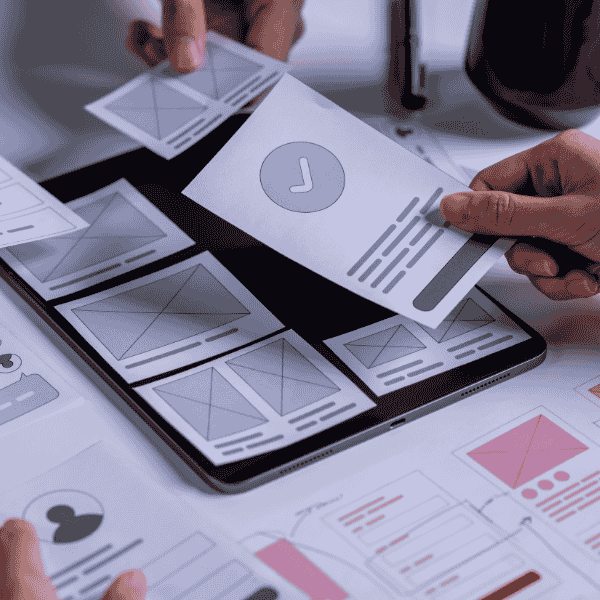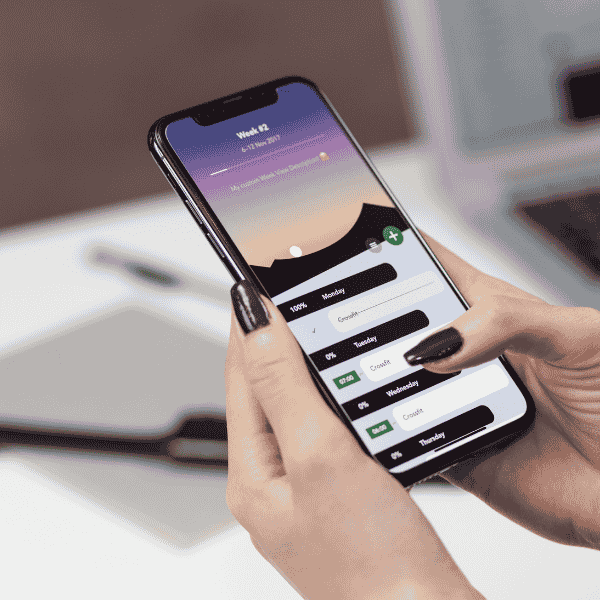When you initially enter the field of digital design, you could run into two concepts that appear to be used synonymously but have different connotations in the context of user-centric design. The two foundations that support the virtual experiences we have every day are UI and UX. Have you ever pondered the complex differences that make up the world of digital user interfaces and experiences? This introductory manual will delve into the fascinating world of UI and UX design distinctions, giving readers a clearer understanding of these two crucial facets.
Understanding UI and UX Design
We must first understand the fundamentals of UI and UX before starting this road of differentiation. The term “user interface” (UI) refers to the visual components that welcome us when we engage with software, a website, or an application. Think of it as the exterior of a car, with its slender curves, glossy paint, and thoughtfully positioned controls. On the other hand, User Experience (UX) covers every aspect of our interaction with the digital world. It looks deeper, taking into account things like usability, effectiveness, and emotional fulfillment.
UI vs UX: A Comparative Analysis
Although the phrases UI and UX might appear to be interchangeable, they serve different purposes. Let’s use a culinary analogy to better comprehend this. Consider UI as the way a gourmet cuisine is presented: the way the ingredients are arranged on the plate, the way the sauce is drizzled artistically, and the way the colors are balanced. UX, on the other hand, is the delectable taste and the explosion of favors that you enjoy with each bite. A gorgeous interface does not necessarily imply a positive user experience, just as an attractively presented dish does not necessarily imply a tasty meal.
Exploring UI and UX Differences
Let’s use architecture as a comparison to explore the subtle distinctions between UI and UX design. Imagine UI as a building’s eye-catching façade, complete with a magnificent entryway, glass windows, and complex embellishments. It’s what you notice while you’re far away. The layout, the comfort of the spaces, and the simplicity of navigation are all part of the user experience (UX) once you enter. A charming entrance is lost if the inside is disorganized and uncomfortable.
Distinguishing UI and UX Design Elements
Let’s dissect the components of UI and UX to better understand the differences. UI design includes the visual aspects that give an application an appealing appearance, such as buttons, color schemes, typography, and icons. On the other hand, UX design includes procedures like user research, wireframing, prototyping, and testing that guarantee a smooth and positive user-product interaction.
The User Interface: More Than Just Looks
UI design goes beyond what might initially appear to be its only focus on aesthetics. UI establishes the visual tone for the digital experience, much like a book’s cover establishes the tone of the story inside. Users are guided through the virtual experience by consistent design components, intuitive navigation, and thoughtful placement of interactive elements.
The User Experience: Beyond the Surface
UX delves deeply into the emotional bond between the user and the product, whereas UI only deals with the surface. The rides, the food stands, and the décor of a theme park are examples of the UI. The UX, though, is what you remember, laugh, enjoy, and look forward to. Your feelings and memories of the encounter are shaped by the ethereal essence.
UI and UX Design for Beginners
Understanding the symbiotic link between UI and UX is essential for those just entering the captivating world of digital design. Similar to learning to dance, UI consists of the choreography, dance steps, and costumes. UX is the dance’s rhythm, emotional resonance, and effect on the audience. For a performance to be memorable, both are necessary.
Unveiling the UI and UX Design Process
Have you ever wondered how designers produce the digital magic we use every day? A seamless blending of UI and UX considerations is used throughout the process. It’s similar to making a movie; UI is the exquisite set design, costuming, and cinematography. UX refers to the movie’s storyline, tempo, and the feelings it arouses. Only when these components are in perfect balance can the magic be seen on screen.
Basics of UI and UX Design Principles
Let’s explore the guiding principles of UI and UX design to better understand their base. The ideas of visual hierarchy, consistency, and accessibility are used in UI design. The note placement, crescendos, and harmonies are similar to those found in a symphony in terms of composition. Usability, effectiveness, and empathy are among the ideals upheld by UX design. It is comparable to creating an experience that appeals to each user’s emotions.
Designing for Emotion: A UX Perspective
Have you ever questioned why certain websites or apps make you feel so strongly? That is how UX design works. Imagine creating a rollercoaster ride with its gradual ascent, abrupt plummet, and unpredictable turns. In order to ensure that every encounter produces the desired emotions, whether they be excitement, comfort, or inspiration, UX designers methodically plan out the user’s emotional journey.
Balancing Aesthetics and Functionality
Finding the right balance between aesthetics and functionality is essential in the complex tango between UI and UX. It’s similar to baking a cake in that UI serves as the frosting, decorations, and sprinkles. UX refers to the cake’s feel, flavor, and level of satiety. If the utility falls short of the visual appeal, a design loses its appeal.
Navigating the UI and UX Career Path
Starting a career can be exciting for individuals drawn to the enthralling world of UI and UX. It’s like heading off on an expedition; the UI serves as the map, compass, and route. UX is the wind that steers the ship, the waves that present difficulties, and the opportunities that lie ahead.
UI and UX Collaboration: A Symbiotic Approach
Imagine UI and UX working together as the principal instruments in a symphony to create a pleasing tune of user-centric design. UI designers manipulate colors, forms, and textures to create a visual symphony. The emotional symphony is composed by UX designers, who make sure that each note strikes a chord with the user. The outcome is a stunning digital work of art.
The Future of UI and UX: Trends to Watch
The world of UI and UX design changes along with technology. Think of a tapestry that is continuously being woven from fresh strands. The future holds fascinating developments, from sympathetic experiences that pander to our emotions to immersive interfaces that blur the border between reality and vitality. Designers will continue to influence how we engage with the digital environment by embracing these trends.
Conclusion
The road from being a novice to comprehending the subtleties of UI and UX design distinctions is a pleasant one in the field of digital design. Your understanding of these two pillars will eventually help you to construct a complete image of user-centric design, much like how a puzzle comes together piece by piece. Therefore, keep in mind that although UI and UX are different, they are nevertheless interdependent—like the yin and yang of the digital cosmos.
FAQs
What is the main difference between UI and UX design?
Their areas of focus are where they diverge most. While UX design focuses on the total user experience, including usability and emotional involvement, UI design is concerned with aesthetics and visual components.
Can UI and UX design be done by the same person?
Despite certain similarities, UI and UX design require different sets of skills. While some designers have dual specializations, larger projects frequently benefit from the combined efforts of UI and UX designers who are committed to their craft.
How do UI and UX designers work together?
The design approach involves tight collaboration between UI and UX designers. While UX designers concentrate on user research, information architecture, and assuring a seamless experience, UI designers construct the aesthetic elements.
Is coding knowledge necessary for UI and UX designers?
Although it can be useful, having coding skills is not a prerequisite for UI and UX designers. Communication between designers and developers can be facilitated by having a basic understanding of code.
What role does empathy play in UX design?
The foundation of UX design is empathy. Designers may develop experiences that actually resonate and address the needs, feelings, and pain points of people by taking into account their needs, emotions, and pain points.






